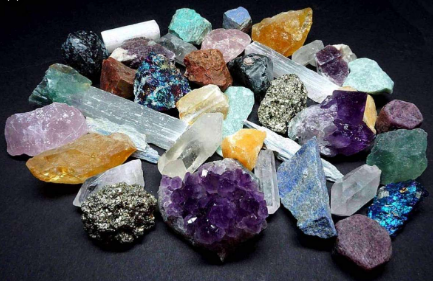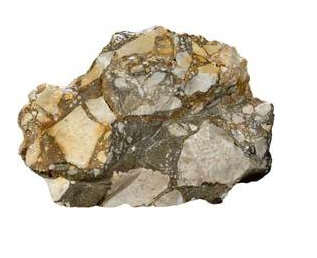What Is A Mineral?
A mineral is a naturally occurring inorganic element or compound having an orderly internal structure and characteristic chemical composition, crystal form and physical properties. Minerals also have a distinct shape and can easily be identified solely by their form and color patterns. Other distinctive properties of minerals include hardness, specific gravity, luster, fracture and tenacity. Moreover, there are also other minerals that exhibit certain properties such as fluorescence and radioactivity, properties which other minerals do not exhibit. Examples of minerals include:
- Feldspar
- Quartz
- Mica
- Halite
- Calcite
- Aluminum
- Amphibole
- Abramovite
- Althupite
- Zinc, Sodium, Potassium, Gold, Silver, Diamond, Iron and fluoride.
Minerals are primarily classified by their shape and crystalline structure and do not go through the same processes of formation as rocks. All minerals belong to a chemical group, which represents their affiliation with certain elements or compounds. The classified chemical groups for minerals include: native elements, Sulfides, Oxide, Halides, Carbonates, Nitrates, Borates, Sulfates, Chromates, Phosphates, Arsenates, Vanadates, Tungstates, Molybdates and Silicates.

There is a class of substances known as ‘’mineraloids’’ which are not truly falling into category of minerals, but are still classified as minerals. Despite the fact that mineraloids lack certain essential characteristics of minerals, they are nevertheless classified as minerals in most reference guides including the acclaimed Dana’s System of Minerology. Two well known examples in this regard are mercury which lacks a crystal structure due to its liquid state and Opal, which also lacks a crystal structure as well as a definitive chemical formula.
Different minerals are useful for various purpose like the gem industry, for carving, as abrasives and for formation of other elements or rocks. Minerals such as aluminum are used in making containers, appliances and food preparation cans. Others like copper ores are utilized in jewelry manufacturing, eating and cooking utensils, electrical products, cars, computers and many other segments.
What You Need To Know About Minerals
- A mineral is a naturally occurring substance formed through geological processes and has a specific chemical composition.
- The science that studies minerals is referred to as mineralogy.
- Minerals are classified primarily based on their shape and crystalline structure and do not go through the same processes of formation as rocks. They can be easily identified solely by their color patterns and forms.
- Minerals are generally smaller in size.
- Minerals can be classified as oxides, sulfides, halides, native elements etc.
- Minerals do not contain any organic substance.
- Minerals usually have definite shape.
- Example of minerals includes Zinc, Sodium, Potassium, Gold, Silver, Diamond, Iron and fluoride.
- Minerals have a higher commercial value when compared to rocks.
- Minerals have several uses, for example Aluminum is used for making cans, containers and appliances for home use. Chromite is used for making parts of automobiles; ores of copper are used to make coins, jewelry and wiring equipments.
What Is A Rock?
A rock is a solid, inorganic, naturally-formed substance without a particular atomic structure or chemical composition. Examples of rocks include:
- Granite
- Limestone
- Marble
- Pumice
- Obsidian
- Sandstone
- Shale
- Slate
Each of these rocks consists of several different minerals, which are mixed up inside the rock through a variety of geologic processes. Rocks are generally classified on the basis of formation, texture, chemical and mineral composition. In this regard, rocks can are classified as metamorphic, sedimentary or igneous. Igneous rocks are formed from solidified molten lava and are typically rich in granite. They are divided into two main groups, plutonic rock and volcanic rock. Metamorphic rocks form through a transformation process of one rock to another whereas sedimentary rocks are formed through the deposition of organic material. Majority of naturally existing rocks will contain known minerals such as mica, epidote, feldspar, magnetite, quartz etc.

A rock can also contain organic remains and mineraloids apart from regular mineral formations. There are some rocks that may include just one mineral formation though.
Rocks have great cultural, commercial and social value only because of the mineral present in them. Rocks are also used to establish dates of various civilizations that have existed on earth. More importantly, rocks are very useful in making roads, buildings, polishing materials; industrial work etc. rocks like granite and marble are commonly used in home improvement for aesthetic reasons.
What You Need To Know About Rocks
- A rock is a naturally occurring solid combination of more than one mineral or mineroids. Rocks do not have a definite chemical composition.
- Petrology is the science that studies rocks.
- Minerals have distinctive properties such as color, hardness, crystal habit, specific gravity, luster, fracture and tenacity.
- Rocks may range in size from tiny pebbles to huge mountains.
- Rocks are classified based on their formation process, texture, chemical and mineral composition.
- Rocks can be classified as metamorphic, sedimentary or ingeous.
- Rocks contain organic substances such as fossil remain of both plant and animals.
- Rocks do not have a definite shape.
- Example of rocks include Limestone, Basalt, Coal, Claystone etc
- Rocks have a less commercial value when compared to minerals.
- Rocks have several uses, for example limestone is used as a component of cement which is used in construction.
Difference Between Minerals And Rocks In Tabular Form
| BASIS OF COMPARISON | MINERALS | ROCKS |
| Description | A mineral is a naturally occurring substance formed through geological processes and has a specific chemical composition. | A rock is a naturally occurring solid combination of more than one mineral or mineroids. Rocks do not have a definite chemical composition. |
| Science | The science that studies minerals is referred to as mineralogy. | Petrology is the science that studies rocks. |
| Classification | Minerals are classified primarily based on their shape and crystalline structure and do not go through the same processes of formation as rocks. They can be easily identified solely by their color patterns and forms. | Rocks are classified based on their formation process, texture, chemical and mineral composition. |
| Distinctive Properties | Minerals have distinctive properties such as color, hardness, crystal habit, specific gravity, luster, fracture and tenacity. | |
| Size | Minerals are generally smaller in size. | Rocks may range in size from tiny pebbles to huge mountains. |
| Classification | Minerals can be classified as oxides, sulfides, halides, native elements etc. | Rocks can be classified as metamorphic, sedimentary or ingeous. |
| Content | Minerals do not contain any organic substance. | Rocks contain organic substances such as fossil remain of both plant and animals. |
| Shape | Minerals usually have definite shape. | Rocks do not have a definite shape. |
| Examples | Example of minerals includes Zinc, Sodium, Potassium, Gold, Silver, Diamond, Iron and fluoride. | Example of rocks include Limestone, Basalt, Coal, Claystone etc |
| Commercial Value | Minerals have a higher commercial value when compared to rocks. | Rocks have a less commercial value when compared to minerals. |
Similarities Between Minerals And Rocks
- Both are solid, inorganic, naturally-formed substances.
- Both minerals and rocks are either found or mined.
- Both mineral and rocks can be used as raw material in production of useful household and industrial products.
- Both mineral and rocks have great cultural, commercial and social value.
- Both rocks and minerals can be found in different colors.